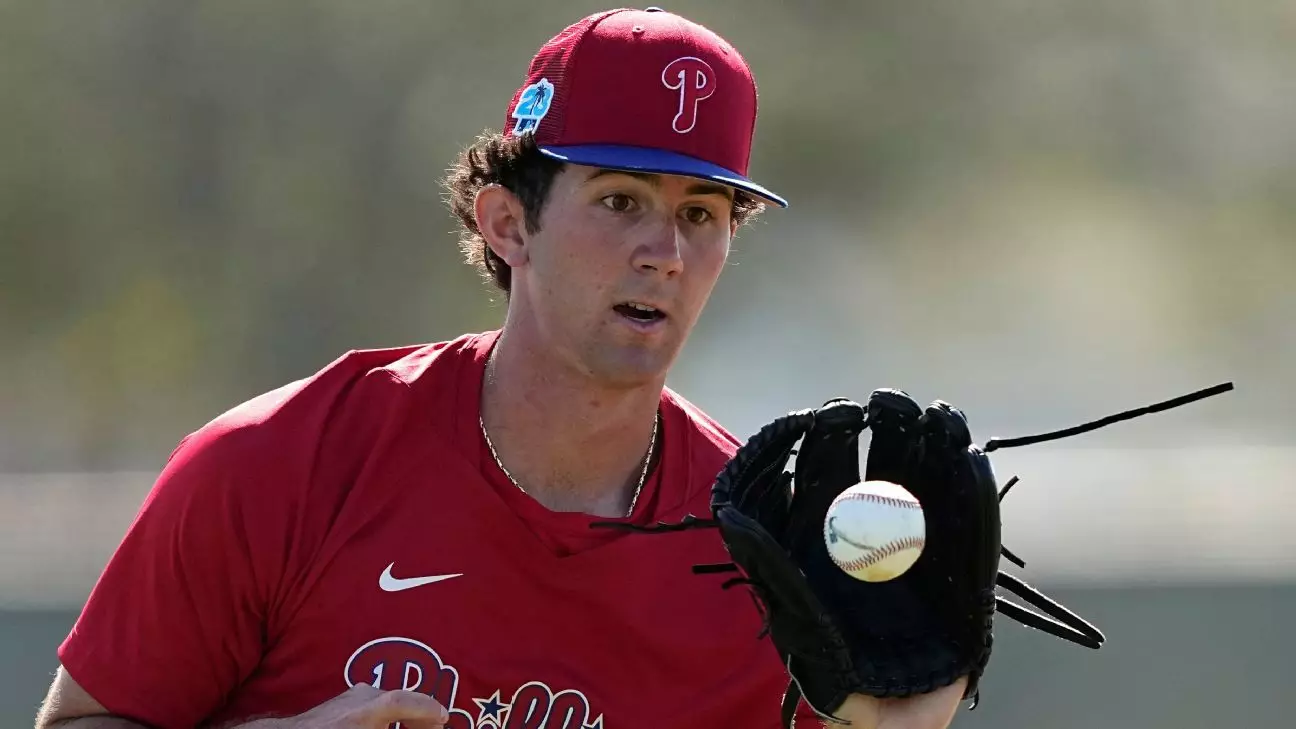Andrew Painter, the Philadelphia Phillies’ top pitching prospect, has been riding a wave of high expectations ever since he emerged as a promising talent in 2021. Selected 13th overall and awarded a hefty $3.9 million signing bonus, Painter’s meteoric rise through the minor leagues was almost cinematic — posting a stellar 1.48 ERA across three levels and accruing 57 strikeouts over 51.2 innings this season alone. However, the narrative surrounding his career must not get trapped inside the bubble of his early success or the allure of the All-Star Futures Game selection. Injuries, particularly those involving the elbow, have a notorious reputation for upending even the brightest pitching prospects’ trajectories, and Painter’s roadblock this year should spark more cautious optimism rather than premature alarm.
Injuries and Recovery: The Invisible Battle
Painter’s Tommy John surgery, performed after an unfortunate elbow injury during spring training, is a serious milestone in any pitcher’s career and complicates the straightforward rise through the ranks. While modern medicine has made such procedures more manageable than decades ago, recovery remains a lengthy and unpredictable process. His withdrawal from the prestigious Futures Game isn’t merely a setback; it’s a strategic decision prioritizing long-term health over short bursts of exposure. The Phillies’ management, led by Rob Thomson, has wisely adopted a measured approach. Thomson’s remarks emphasize a philosophy that prioritizes Painter’s health and readiness before any major league debut is even considered. This level-headed stance underlines the critical balance clubs must strike between accelerating a prospect’s development and ensuring sustainable pitching health.
The Bigger Picture: Futures Games vs. Real MLB Success
Painter’s journey also highlights the broader phenomenon related to the All-Star Futures Game. Statistically, the game has successfully predicted future MLB participation for a majority of its invitees, with 86.5% eventually reaching the majors and over 20% becoming actual MLB All-Stars. Yet, the game alone is far from a guarantee of superstardom. This distinction is crucial when evaluating prospects like Painter—past achievements and accolades, while impressive, are only part of a longer, multifaceted process. Success in baseball is seldom linear, and external recognition must be weighed alongside physical resilience, mental toughness, and organizational support.
A Case for Patience and Strategic Development
Painter’s case should serve as a cautionary tale against rushing prospects too quickly into the big leagues, especially after major surgery. His initial rapid ascension certainly justified the excitement around him, but the Phillies’ patient, health-first development approach is far more commendable than chasing immediate returns. In this sense, Painter’s story is not one of failure or delay but of responsible stewardship — a reminder that sustainable athlete development requires careful pacing amidst the intense pressures of performance and hype.
Ultimately, Andrew Painter represents more than just a promising arm; he embodies the complexities of talent cultivation in contemporary baseball, where potential must be carefully nurtured to flourish into lasting success.


Leave a Reply